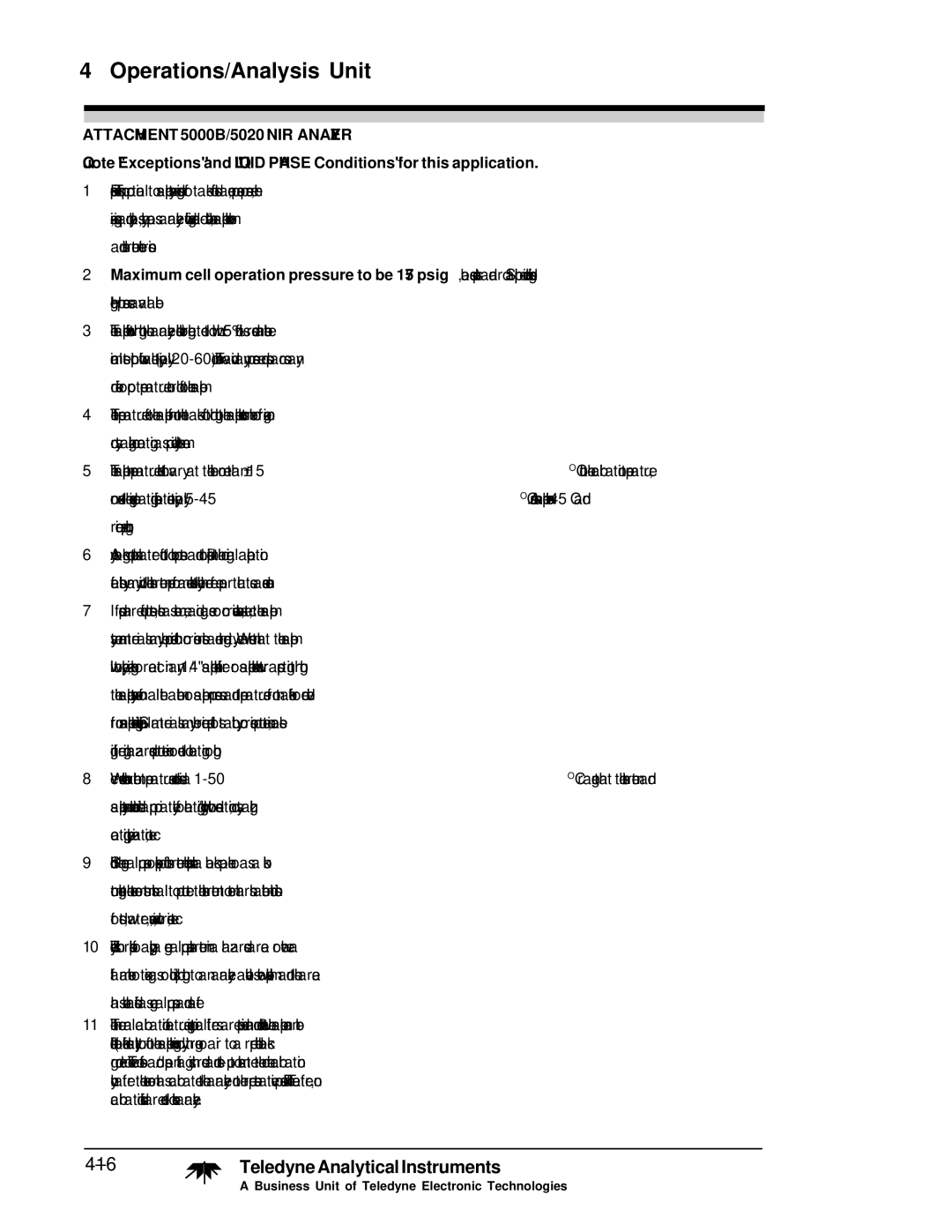
4 Operations/Analysis Unit
ATTACHMENT 5000B/5020 NIR ANALYZER
Quote "Exceptions" and "LIQUID PHASE Conditions" for this application.
1Response Time is proportional to sample system design for
2Maximum cell operation pressure to be 175 psig, based upon standard Sapphire window cell design. Higher pressures available.
3The sample flow through the analyzer should be regulated to within ± 5% of its recommended absolute nominal set point flow value (typically
4The temperature of the sample from the
5The sample temperature should not vary at the inlet more than ± 15 OC of the calibration temperature, nor exceed the design operating specifications
6Any background components later found to be present and not specified in the original application feasibility may void the instrument performance should they interfere. particulates assumed none.
7If compounds are found present, such as moisture, acid gases or corrosive solvents, etc., the sample system materials may be compromised for corrosion resistance integrity. We assume that the sample will not polymerize, clog or react in any 1/4" sample line, filter or sample cell when transporting through the sample systems for all inlet ambient or sample pressures and temperatures from takeoff or derived from sample conditioning. Special materials may be required for stability, corrosion protection, coalesc- ing, filtering, hazardous protection or due to heating or cooling.
8We recommend when ambient temperatures exceed outside a
9Should the general purpose or explosion proof instrument be supplied on a
10Teledyne is not responsible for applying a general purpose instrument in a hazardous area or where a flammable or toxic gas or liquid is brought to an analyzer above its lower explosive limit and the area has been classified as general purpose and safe.
11The internal calibration features using optical filters are optimized and used when the sample can be flushed (backflushed usually) out of the sample cell using dry nitrogen or air to a reproducible back- ground zero. The zero offset and/or span flag is introduced and
![]()
![]() TeledyneAnalyticalInstruments
TeledyneAnalyticalInstruments
A Business Unit of Teledyne Electronic Technologies
